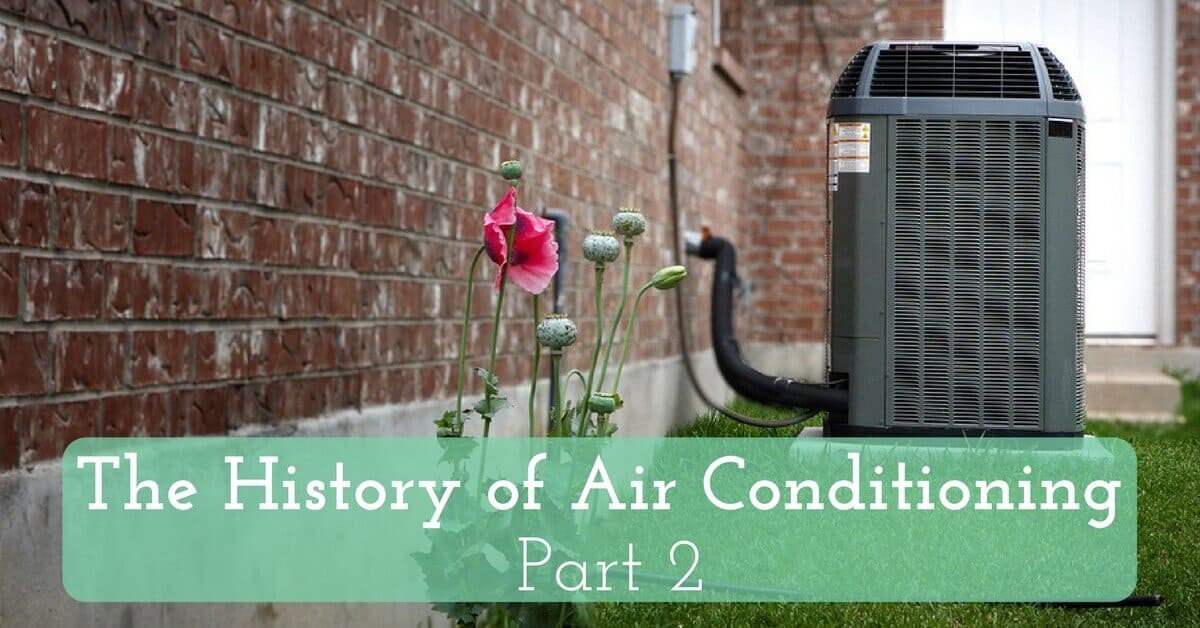- Finding the Right Indoor Plants for Desert Your Home - April 28, 2023
- Common Misunderstanding About Sun Exposure - April 18, 2023
- All about the Arizona Monsoon Season - May 21, 2021
In our last post, we explored some of the most effective ancient air conditioning techniques, and learned about how a happy accident in a publishing company led to the modern invention of air conditioners. We explored the first time air conditioners were used in public spaces and when they became commonplace for communal spaces. Today, we pick up in 1929, when air conditioners first made their debut appearances in private homes.
Frigidaire, General Electric & General Motors Create Prototypes
Although popular in community spaces since the early 1920s, these air conditioning systems were simply too large and too expensive for even the most wealthy and great of homes. In 1929, however, Frigidaire created a split-system “room cooler”. The unit was small enough for home use but was still heavy and expensive. The unit also required a separate condensing unit to be installed, thus increasing costs for homeowners. Frank Faust, an engineer for General Electric, improved on this design and created a self-contained room cooler – thus eliminating the need for the bulky condensing unit. General Electric ended up producing about 30 similar prototypes in the next two years.
Around this time, three engineers from General Motors greatly improved the safety of home air conditioning units, by creating synthesized chlorofluorocarbon (CFC) coolants. These cooling systems were the first to be non-flammable. These chemicals, however, would be linked to severe damage to the ozone decades later. From there, air conditioning units continued to improve in size, effectiveness and affordability. Schultz & Sherman filed the first patent for window ledge units in 1932, which was eventually improved by Henry Galson. Galson’s design was the first to be a true success with 43,000 units being sold by 1947. This was the first time people could enjoy an air conditioned home without extremely expensive home upgrades necessary.
From there, popularity increased exponentially. So much so that a mere 6 years later 1-million units were sold in 1953 alone. By the late 1960s, most homes had central air conditioning and nearly 100 million (or 87% of all households) had some sort of air conditioning unit.
Air Conditioning Units of Today
Central Air Conditioners
Central air is arguably the most popular option for Arizona homes. In central air systems, an outside compressor drives the process. Basically, a coil filled with refrigerant cools the air. This air is then distributed throughout the house via ducts. Energy efficiency of central air began being regulated by the government based on “SEER” scored in 1992. Back then, most systems only scored about a 6 or 7 on this scale. As of 2015, central air conditioning units in our Southwest region must meet an SEER score of 12.2 or higher. To qualify as ENERGY STAR, systems must score a 14.5 or higher, despite where in the country it is installed. (http://smarterhouse.org/cooling-systems/types-cooling-systems).
Room Air Conditioners
Room air conditioners can either be installed on the interior wall of a room in a home or apartment, or can sit in the window. Window units are the older of the two options, and are more often used in older apartment buildings in the Midwest and on the East Coast. These units work by using a compressor located outside. Both units are large enough only to cool one room, so many homes have multiple units installed at a time. These units are cheaper to install than central air conditioning units and are often more energy efficient. These types of units installed on interior walls are the most popular conditioning units in other notoriously hot countries such as Australia and many countries throughout Southeast Asia. (http://smarterhouse.org/cooling-systems/types-cooling-systems).
Evaporative (Swamp) Coolers
This type of cooling system is lesser used in many parts of the country, but is a good option in dry climates such as our own. This system works by pulling outside air into the house and through moist pads. Through this process, the air is cooled through evaporation. These systems are much more cost effective than central air conditioning units – usually costing only about half the original installation price of a central unit. These systems also tend to cost about 75% less per month on electric bills than central systems and have the ability to cool outside air by about 30 degrees.
If you want to give your air conditioner and wallet a break, it may be a good idea to consider installing solar screens to your home’s windows. Sun screens prevent 48% of the sun’s heat from even reaching your windows and reduce most electricity bills by about 25% each and every month. Contact our friendly team at CC Sunscreens for a free consultation and quote.

